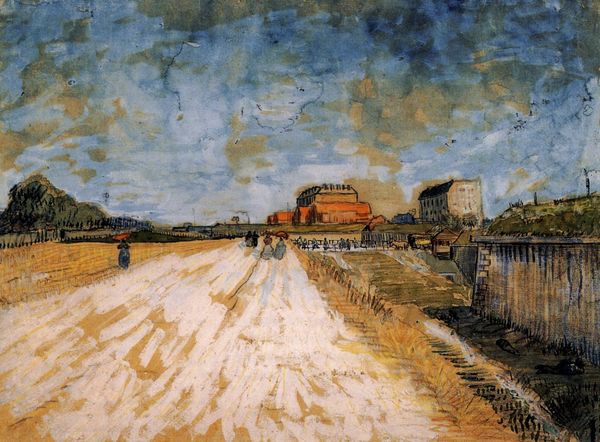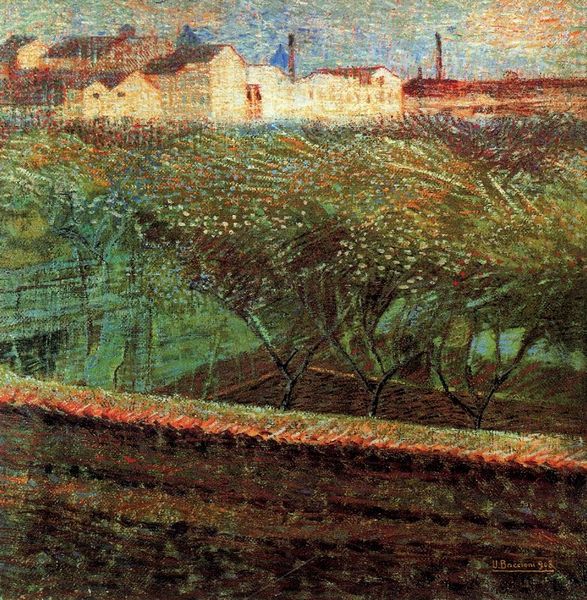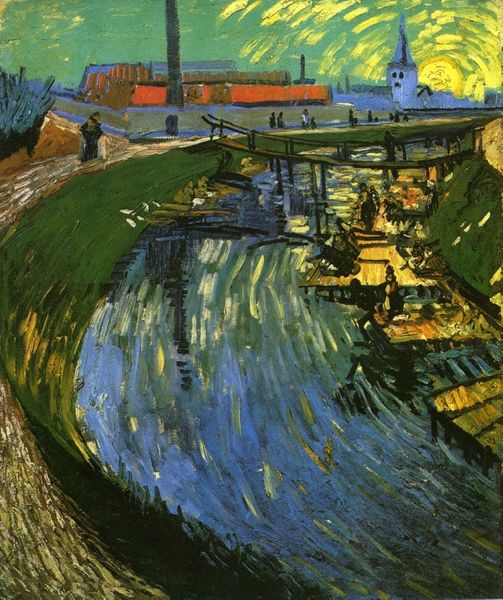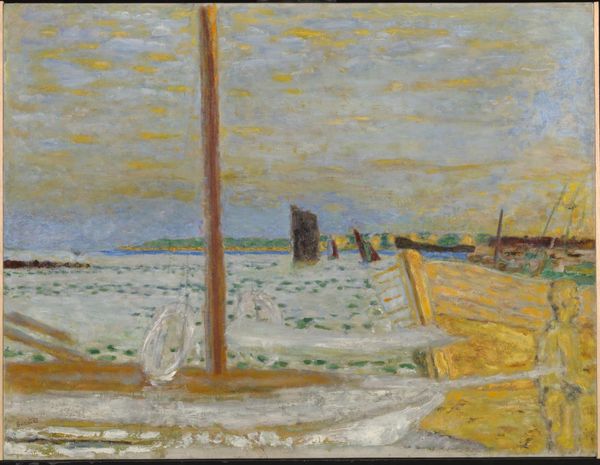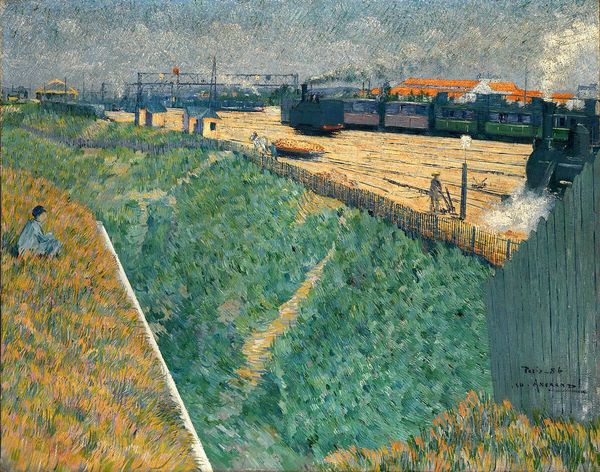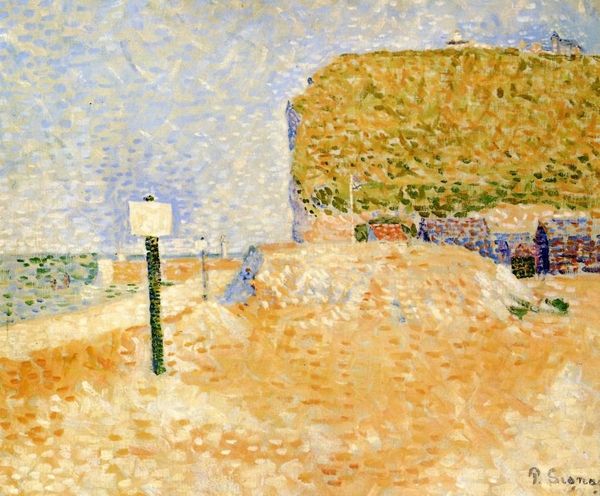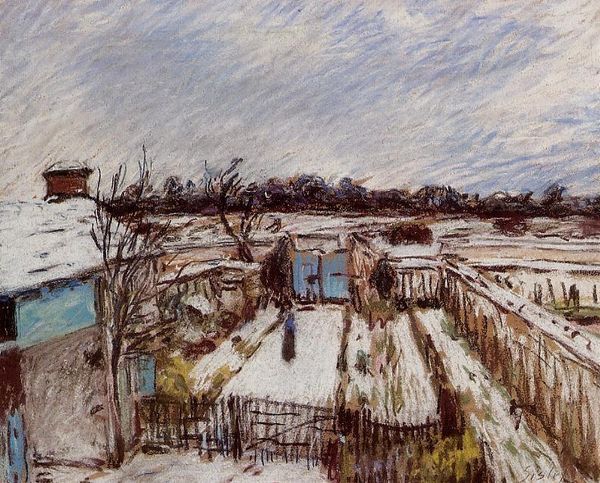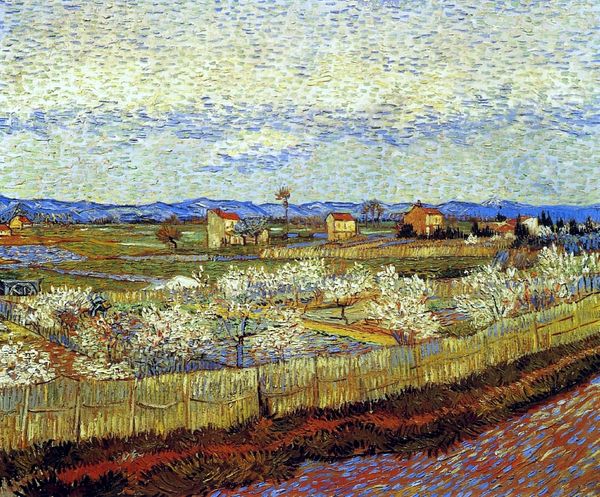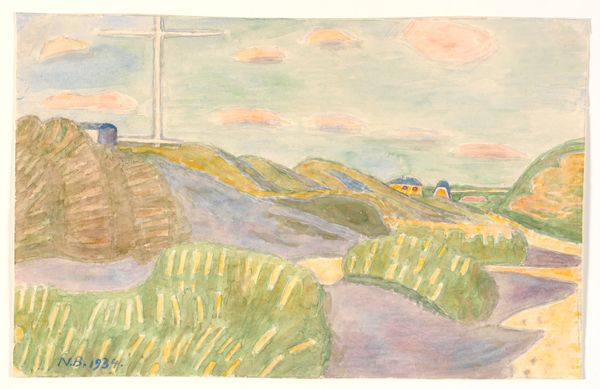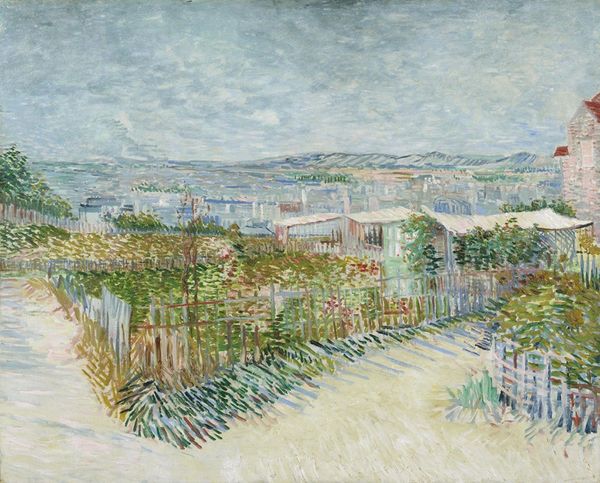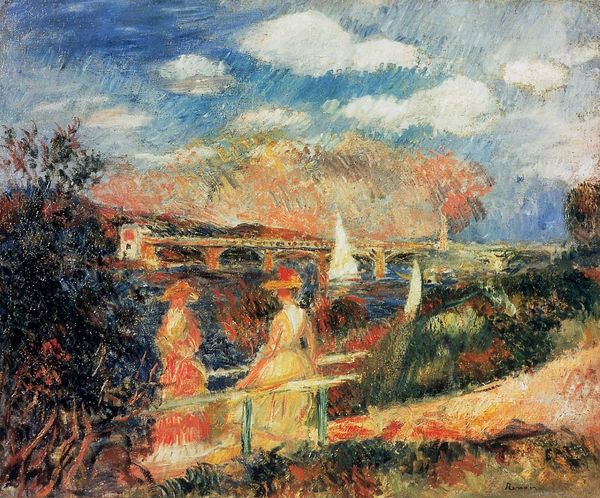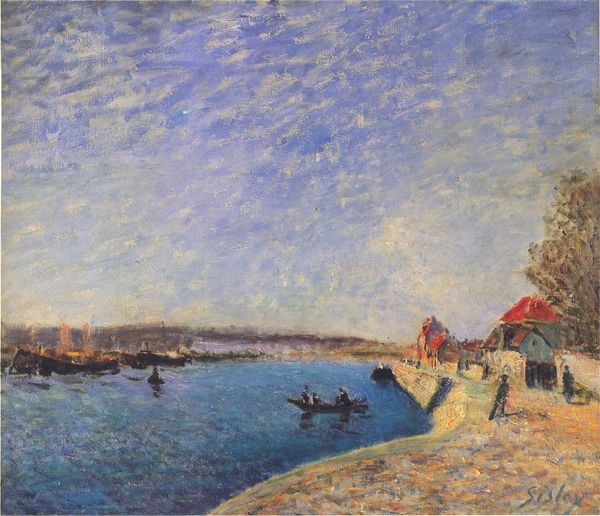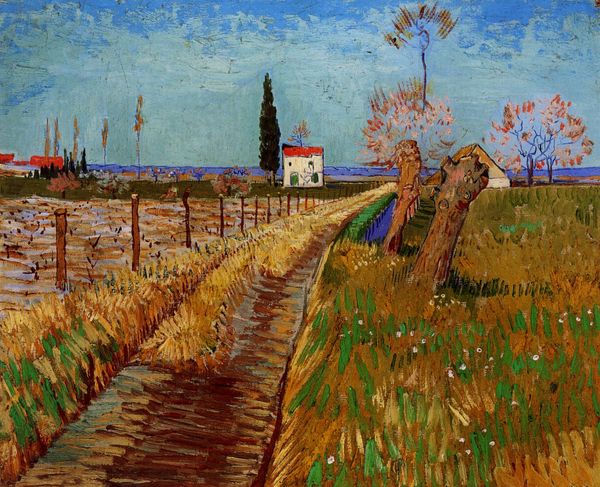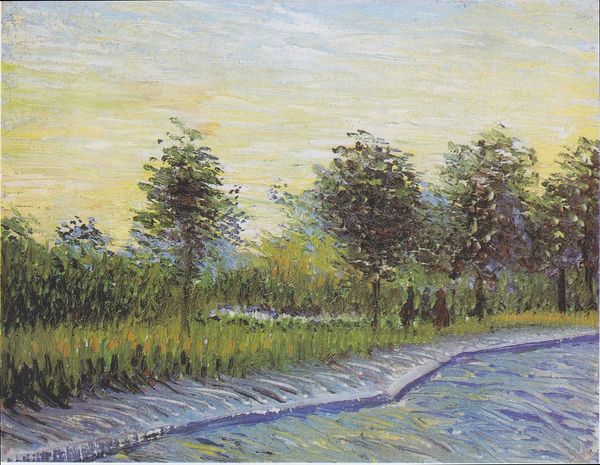
Fortifications of Paris with Houses 1887
0:00
0:00
vincentvangogh
Whitworth Art Gallery (University of Manchester), Manchester, UK
plein-air, oil-paint, impasto
#
sky
#
plein-air
#
oil-paint
#
landscape
#
house
#
impressionist landscape
#
oil painting
#
impasto
#
cityscape
#
post-impressionism
#
building
#
monochrome
Copyright: Public domain
Curator: Van Gogh’s “Fortifications of Paris with Houses,” painted in 1887, offers a fascinating glimpse into his Paris period, a moment of transition and experimentation in his artistic journey. The painting is currently held at the Whitworth Art Gallery in Manchester. Editor: It's interesting. My immediate reaction is the weight of the muted colors, how the yellow ochre and soft blues create this pervasive feeling of…containment. Curator: I think that "containment" is a useful lens for interpreting it. Van Gogh painted this during a period when Paris itself was rapidly transforming. The fortifications, initially symbols of protection, were becoming obsolete, caught between the city's expansion and changing military strategies. It's that sense of being caught between eras that informs much of Post-Impressionist imagery. Editor: Absolutely, the fortifications loom so large. Their imposing, geometric presence clashes against the very few figures. Do you see the subtle symbolism between a fading structure meant to keep things both in and out? And the single figure perhaps wanting out? Curator: That juxtaposition, between architecture and figure, is certainly one that van Gogh may be inviting the viewer to consider. You sense that feeling of historical forces grinding against individual lives. Notice, for example, the loose, expressive brushwork typical of his Post-Impressionist style—a departure from the rigid forms he depicts. Editor: It is quite an interesting interplay. His application of paint—those little impasto marks suggesting light and energy. They also speak of a raw, unmediated experience. What were the prevailing responses from critics at the time? Curator: Initial reactions to van Gogh's Parisian works were mixed. Some appreciated the intensity of his vision, while others found his style too unconventional. What is telling, however, is that the period did transform how he chose to express himself. He chose subject matter that communicated complex issues relating to culture, class, labor, and identity, and the very human issues which underpin them. Editor: So in the end, what remains isn't just a landscape, but this snapshot of an historical turning point seen through Van Gogh's very specific emotional sensibility. Curator: I agree. It offers a glimpse into a physical place undergoing change. And the way a particular painter, at a specific moment in time, captures the mood and texture of urban existence, is the painting's ultimate staying power.
Comments
No comments
Be the first to comment and join the conversation on the ultimate creative platform.
